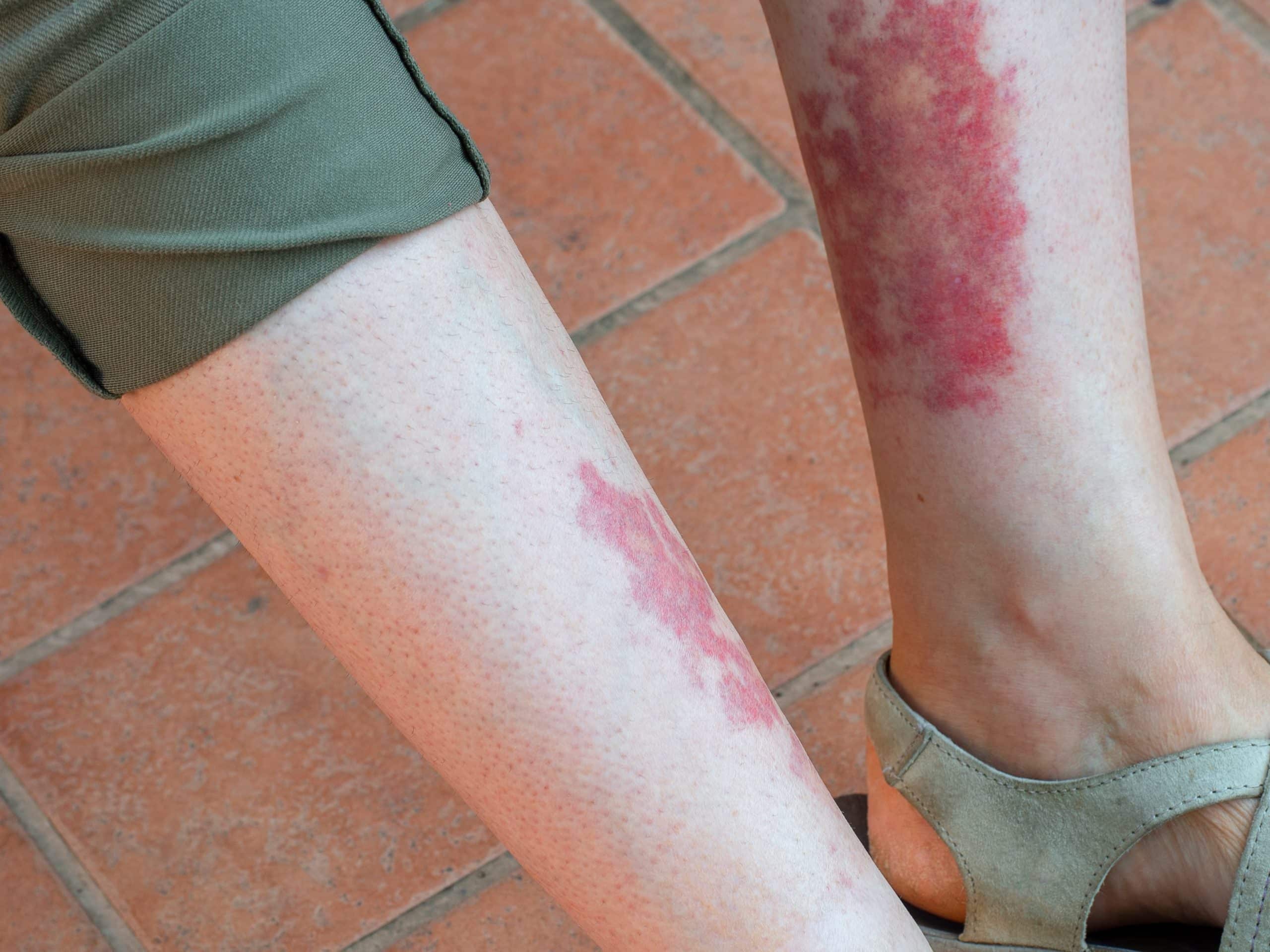What Causes Vasculitis – And How To Treat It
Exactly what causes vasculitis is not known, however, like other autoimmune conditions, genetics, environmental factors, and microbiome dysbiosis are responsible. Vasculitis is an inflammation of the blood vessels caused by an autoimmune response. An autoimmune disorder occurs when the body’s immune system mistakenly attacks its own healthy cells, tissues, or organs.
In vasculitis, the immune system targets the walls of small to medium-sized blood vessels, leading to their weakening and eventual destruction. This results in a wide variety of signs and symptoms, depending on which organ systems are affected. Possible areas of involvement include the skin, lungs, kidney, heart, brain, joints, or gastrointestinal tract.1
Vasculitis is the result of a combination of factors, including genetic predisposition and often, an underlying autoimmune disorder. Vasculitis is often caused by certain infections, such as hepatitis C or HIV, medications, environmental toxins, or other triggers.2 3
Vasculitis can be classified into two general categories: primary and secondary vasculitis. Primary vasculitis occurs as a result of the body’s immune system attacking healthy blood vessels. Secondary vasculitis is caused by an underlying infection or disorder that affects the circulatory system.
Specific types of vasculitis can be associated with certain diseases, such as rheumatoid arthritis, lupus, and inflammatory bowel disease. In either form of vasculitis, the inflammation of blood vessels leads to several complications, including organ damage or stroke.4
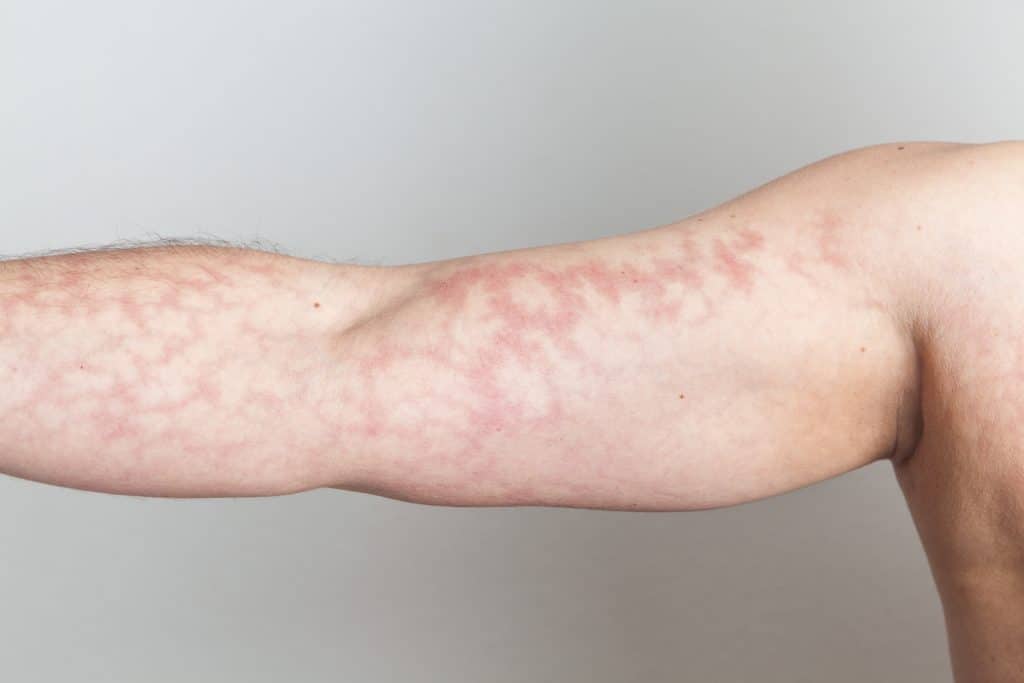
What Are The Different Types Of Vasculitis?
There are several types of vasculitis that can affect different parts of the body. Some of the most common forms of vasculitis include:
Giant Cell Arteritis (GCA): This form of vasculitis affects larger arteries in the head, neck, and arms. It is most common in people over the age of 50 and can cause severe headaches, jaw pain, and vision loss.
Kawasaki Disease: This type of vasculitis affects children mostly under the age of 5. Symptoms include fever, rash, swollen glands, and inflamed blood vessels throughout the body.
Takayasu Arteritis: This type of vasculitis affects the aorta (the large artery that carries blood from the heart to the rest of the body) and its branches, as well as other arteries in the neck, arms, and legs. Symptoms include fatigue, fever, loss of appetite, and weight loss.
Polyarteritis Nodosa (PAN): This type of vasculitis affects medium and small-sized arteries throughout the body, such as those that supply blood to the skin, kidneys, muscles, and nerves. Symptoms include fever, rash, weight loss, and abdominal pain.
Wegener’s Granulomatosis: This type of vasculitis affects the upper airways, lungs, and kidneys. Symptoms include sinus congestion, coughing up blood, and kidney failure.
Behcet’s Disease: This form of vasculitis is associated with recurrent mouth ulcers, genital lesions, and eye inflammation. It can also cause joint pain, skin rashes, and vision problems.5
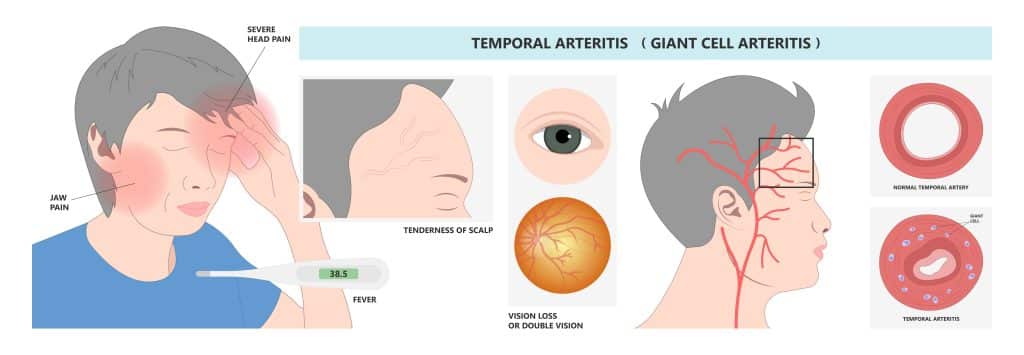
What Causes Vasculitis – 3-Legged Stool
Like other autoimmune conditions, vasculitis has a number of different factors that support it. I like to refer to these factors as the three-legged stool because they all play a role in autoimmune conditions manifesting themselves. First, genetic factors are turned on through epigenetic expression. Second, environmental toxins are present that trigger autoimmune conditions. Third, microbiome dysbiosis provides the perfect conditions for these diseases.
What Causes Vasculitis – Genetics
Genetic predisposition may contribute to some forms of vasculitis, such as Behcet’s Disease or Takayasu’s Arteritis. Studies have suggested that certain genetic markers are associated with an increased risk of developing all types of vasculitis.
People with an inherited autoimmunity disorder known as Wegener’s granulomatosis have an increased risk of developing specific kinds of vasculitis. Additionally, some cases of large vessel vasculitis (LVV) are thought to be caused by genetic mutations that impair the body’s ability to regulate its own inflammatory response.6 7
What Causes Vasculitis – Infections
Vasculitis can be caused by certain infections, including those the common cold, urinary tract infections, and strep throat. Viruses such as hepatitis B and C, HIV, Epstein-Barr virus, and herpes simplex virus can also trigger vasculitis. Bacterial or fungal infections have also been known to cause inflammation that leads to vasculitis. Rarely, an underlying autoimmune disorder can cause vasculitis.8
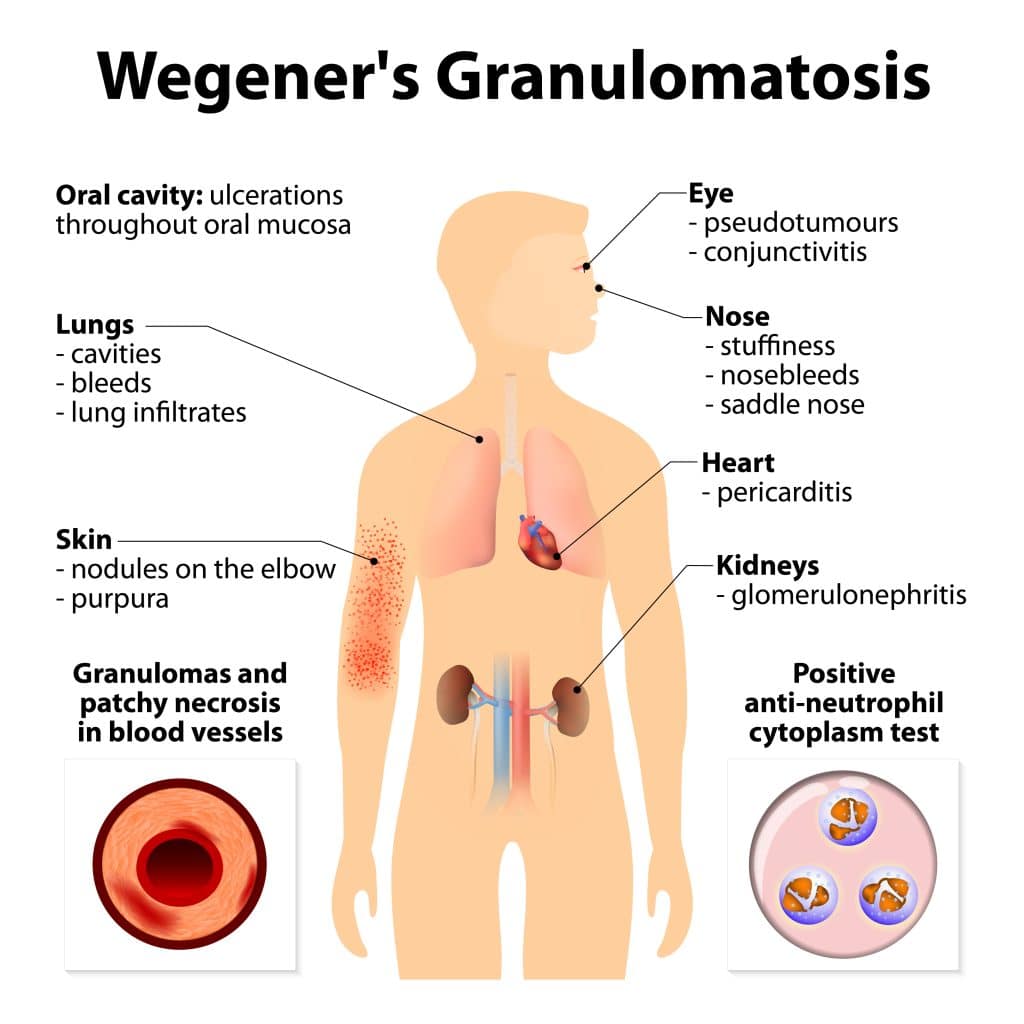
What Causes Vasculitis – Medications
Medications can cause vasculitis in susceptible people. Medications that are known to cause vasculitis include antibiotics, anticonvulsants, and even non-steroidal anti-inflammatory drugs (NSAIDs).
Other drugs that may cause vasculitis include chemotherapy agents, allopurinol, and angiotensin-converting enzyme (ACE) inhibitors. Additionally, certain medications, such as cholesterol-lowering drugs and some antibiotics, can also cause vasculitis.9
What Causes Vasculitis – Environmental Factors
Environmental factors play a role in the development of vasculitis. Exposure to environmental pollutants such as cigarette smoke, industrial chemicals, allergens, or infectious agents may trigger an inflammatory response that leads to vasculitis. Studies have shown links between exposure to certain organic solvents and an increased risk of developing vasculitis.10
The Link Between Vasculitis And Other Autoimmune Conditions
People with certain medical conditions, such as lupus or rheumatoid arthritis, are at an increased risk of developing vasculitis due to their underlying disease process. The link between vasculitis and other autoimmune conditions is complex. Certain genes in combination with environmental pollutants make some individuals more likely to have multiple autoimmune diseases that include vasculitis. 11 12
Read more about autoimmune conditions.
What Causes Autoimmune Conditions – Environmental Toxins
Environmental toxins are often responsible for triggering autoimmune conditions like vasculitis. Exposure to environmental toxins, such as heavy metals or chemicals, can damage the immune system and cause it to become hyperactive. This can lead to an attack on healthy cells, causing inflammation and autoimmune conditions.
What Causes Vasculitis – Airborne Pollutants
Airborne pollutants have been linked to an increased risk of vasculitis. Pollutants such as smoke particles, ozone, and nitrogen dioxide can irritate the lining of the blood vessels, leading to inflammation and damage. Inhaling these pollutants has been linked to an increased risk of various types of vasculitis, including Wegener’s granulomatosis.13

What Causes Vasculitis – Silica Exposure
Silica exposure is another known cause of vasculitis. Silica, or silicon dioxide, is a mineral found in soil, sand, and quartz. It’s also used as an industrial product for glassmaking and other manufacturing processes. When silica dust is inhaled, it can irritate the lungs and lead to inflammation of the vessel walls, which can in turn cause vasculitis. The most common type of silica-related vasculitis is called Churg-Strauss Syndrome.14
What Causes Vasculitis – Smoking
Smoking is one of the most common causes of vasculitis. Smoking increases the risk of developing certain types of vasculitis, including polyarteritis nodosa and Churg-Strauss syndrome. This is because smoking can cause inflammation in blood vessels, which can lead to swelling and narrowing of the vessel walls. When this occurs, it can reduce the amount of oxygen and nutrients that are delivered to tissues, resulting in tissue damage. In addition, smoking is a risk factor for other conditions such as high blood pressure and atherosclerosis, which can further contribute to vasculitis.15
What Causes Vasculitis – Exposure To Heavy Metals
One of the causes of vasculitis is exposure to heavy metals such as mercury, nickel, and cadmium. Long-term exposure to these toxic substances can damage the walls of the blood vessels, resulting in inflammation. These metals cause damage to cells and organs and can lead to inflammation of the blood vessels.16
What Causes Kawasaki Disease – Mercury
Children suffering from Kawasaki disease have higher levels of mercury circulating through their bodies. Evidence suggests that exposure to high levels of methylmercury in contaminated fish or other foods can trigger the symptoms of Kawasaki disease.17 Research also indicates that high levels of cadmium could increase the risk of developing Kawasaki Disease.18
Read more about how toxic mercury is.
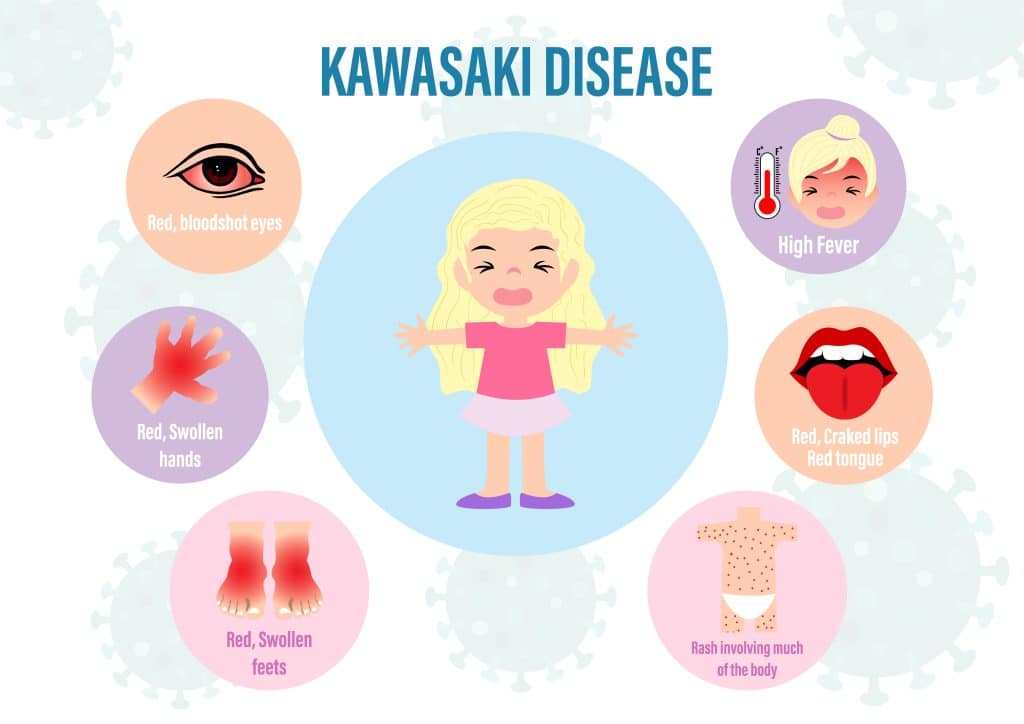
What Causes Kawasaki Disease – Nickel
Kawasaki Disease can be triggered by a nickel allergy. Nickel allergies can occur in individuals who are exposed to nickel-containing objects or products. Nickel is found in many everyday items such as jewelry, zippers, coins, watches, and eyeglass frames. In some cases, the immune system may mistakenly identify nickel as a threat and trigger an inflammatory response that can lead to Kawasaki Disease.19
Removing Heavy Metals From The Body With Oral DMSA
Since heavy metals accumulate in the body and are difficult to remove they must be addressed with a chelating agent. Oral DMSA (Dimercaptosuccinic Acid) is a chelating agent that is often used to help remove heavy metals from the body. This can be done through either a pill or a liquid form, but pills are more common.
When taken orally, DMSA binds to any heavy metals present in the body and removes them through the urine. DMSA is commonly used to treat mercury, lead, and other heavy metal poisoning caused by exposure to these toxins. It can also be used as a general detoxification aid to help reduce overall levels of heavy metals in the body that have accumulated over time.
Read more about removing heavy metals from the body.
What Causes Vasculitis – And How To Treat It
There are a number of things that cause vasculitis including genetic and environmental components. Staying away from environmental toxins like air pollution, cigarettes, silica dust, and heavy metals reduces the environmental aspect of developing vasculitis.
Read more about autoimmune conditions and what causes them.
References
1 Shavit E, Alavi A, Sibbald RG. Vasculitis-What Do We Have to Know? A Review of Literature. Int J Low Extrem Wounds. 2018 Dec;17(4):218-226. doi: 10.1177/1534734618804982. Epub 2018 Dec 3. PMID: 30501545.
2 Boleto G, Vieira M, Saadoun D, Cacoub P. Hepatitis C virus-related vasculitis. Clin Res Hepatol Gastroenterol. 2021 Sep;45(5):101575. doi: 10.1016/j.clinre.2020.11.005. Epub 2020 Nov 29. PMID: 33268038.
3 Cebrián M, Miró O, Font C, Coll-Vinent B, Grau JM. HIV-related vasculitis. AIDS Patient Care STDS. 1997 Aug;11(4):245-58. doi: 10.1089/apc.1997.11.245. PMID: 11361839.
4 Okazaki T, Shinagawa S, Mikage H. Vasculitis syndrome-diagnosis and therapy. J Gen Fam Med. 2017 Mar 24;18(2):72-78. doi: 10.1002/jgf2.4. PMID: 29263994; PMCID: PMC5689388.
5 Jatwani S, Goyal A. Vasculitis. [Updated 2023 Feb 7]. In: StatPearls [Internet]. Treasure Island (FL): StatPearls Publishing; 2023 Jan-. Available from: https://www.ncbi.nlm.nih.gov/books/NBK545186/
6 Trivioli G, Marquez A, Martorana D, Tesi M, Kronbichler A, Lyons PA, Vaglio A. Genetics of ANCA-associated vasculitis: role in pathogenesis, classification and management. Nat Rev Rheumatol. 2022 Oct;18(10):559-574. doi: 10.1038/s41584-022-00819-y. Epub 2022 Sep 15. PMID: 36109667.
7 Furuta S, Iwamoto T, Nakajima H. Update on eosinophilic granulomatosis with polyangiitis. Allergol Int. 2019 Oct;68(4):430-436. doi: 10.1016/j.alit.2019.06.004. Epub 2019 Jun 29. PMID: 31266709.
8 Guillevin L. Infections in vasculitis. Best Pract Res Clin Rheumatol. 2013 Feb;27(1):19-31. doi: 10.1016/j.berh.2013.01.004. PMID: 23507054.
9 Merkel PA. Drug-induced vasculitis. Rheum Dis Clin North Am. 2001 Nov;27(4):849-62. doi: 10.1016/s0889-857x(05)70239-8. PMID: 11723768.
10 Zhao WM, Wang ZJ, Shi R, Zhu YY, Zhang S, Wang RF, Wang DG. Environmental factors influencing the risk of ANCA-associated vasculitis. Front Immunol. 2022 Sep 2;13:991256. doi: 10.3389/fimmu.2022.991256. PMID: 36119110; PMCID: PMC9479327.
11 Calle-Botero E, Abril A. Lupus Vasculitis. Curr Rheumatol Rep. 2020 Aug 26;22(10):71. doi: 10.1007/s11926-020-00937-0. PMID: 32845454.
12 Watts RA, Scott DG. Vasculitis and inflammatory arthritis. Best Pract Res Clin Rheumatol. 2016 Oct;30(5):916-931. doi: 10.1016/j.berh.2016.10.008. Epub 2016 Nov 9. PMID: 27964796.
13 Kuo NC, Lin CH, Lin MC. Prenatal and early life exposure to air pollution and the incidence of Kawasaki disease. Sci Rep. 2022 Mar 1;12(1):3415. doi: 10.1038/s41598-022-07081-y. PMID: 35233028; PMCID: PMC8888747.
14 Farhat SC, Silva CA, Orione MA, Campos LM, Sallum AM, Braga AL. Air pollution in autoimmune rheumatic diseases: a review. Autoimmun Rev. 2011 Nov;11(1):14-21. doi: 10.1016/j.autrev.2011.06.008. Epub 2011 Jul 6. PMID: 21763467.
15 Katz G, Wallace ZS. Environmental Triggers for Vasculitis. Rheum Dis Clin North Am. 2022 Nov;48(4):875-890. doi: 10.1016/j.rdc.2022.06.008. Epub 2022 Oct 1. PMID: 36333001.
16 Houston MC. The role of mercury and cadmium heavy metals in vascular disease, hypertension, coronary heart disease, and myocardial infarction. Altern Ther Health Med. 2007 Mar-Apr;13(2):S128-33. PMID: 17405690.
17 Chang LS, Yan JH, Li JY, Yeter DD, Huang YH, Guo MM, Lo MH, Kuo HC. Blood Mercury Levels in Children with Kawasaki Disease and Disease Outcome. Int J Environ Res Public Health. 2020 May 25;17(10):3726. doi: 10.3390/ijerph17103726. PMID: 32466179; PMCID: PMC7277186.
18 Yeter D, Portman MA, Aschner M, Farina M, Chan WC, Hsieh KS, Kuo HC. Ethnic Kawasaki Disease Risk Associated with Blood Mercury and Cadmium in U.S. Children. Int J Environ Res Public Health. 2016 Jan 5;13(1):101. doi: 10.3390/ijerph13010101. PMID: 26742052; PMCID: PMC4730492.
19 Tramontana M, Bianchi L, Hansel K, Agostinelli D, Stingeni L. Nickel Allergy: Epidemiology, Pathomechanism, Clinical Patterns, Treatment and Prevention Programs. Endocr Metab Immune Disord Drug Targets. 2020;20(7):992-1002. doi: 10.2174/1871530320666200128141900. PMID: 31994473.

